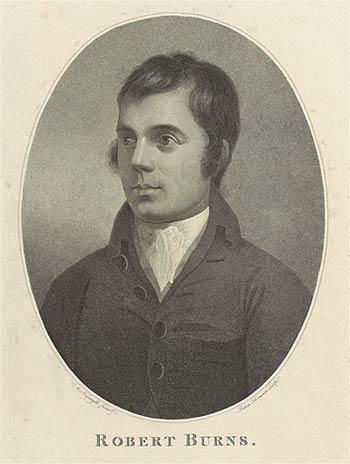
Introduction
Three simple words—meaning "old," "long," and "since"—combine to form a phrase that translates loosely as "time gone by," "old time's sake," or, in some contexts, "once upon a time." But the old Scots phrase so gracefully evokes a sense of nostalgia that it has been embraced throughout the English-speaking world. Every December 31, millions of us raise our voices in song to greet the new year, standing with friends and looking back on days past. The song we share has its roots in an old Scottish ballad about a disappointed lover and a popular dance tune that evoked a country wedding.
It was Robert Burns (1759–1796), the great eighteenth-century Scottish poet, who transformed the old song (and many other Scottish standards) for publication. He devoted the last ten years of his short life to collecting old verses, revising and "mending" as he saw fit, even composing poetry to accompany popular airs. When Burns turned his attention to "Auld Lang Syne," he claimed merely to have transcribed the words from "an old man's singing." But from the time his version of the song was first printed (in 1796, just after his death), it has been understood that Burns lent more than a trace of his distinctive artistry to the now-famous verses.
With rare printed editions and selections from the Morgan's collection of Burns letters—the largest in the world—this online exhibition untangles the complex origins of the song that has become, over time, a globally shared expression of friendship and longing.
This online exhibition is presented in conjunction with the exhibition Robert Burns and "Auld Lang Syne," on view 9 December 2011 through 5 February 2012, organized by Christine Nelson, Drue Heinz Curator of Literary and Historical Manuscripts.
Engraved portrait of Robert Burns (1759–1796) by Paton Thomson (ca. 1750–after 1821) after a painting by Alexander Nasmyth (1758–1840). London and Edinburgh: Published by T[homas] Preston and G[eorge] Thomson, 1817. Purchased by Pierpont Morgan, 1906
